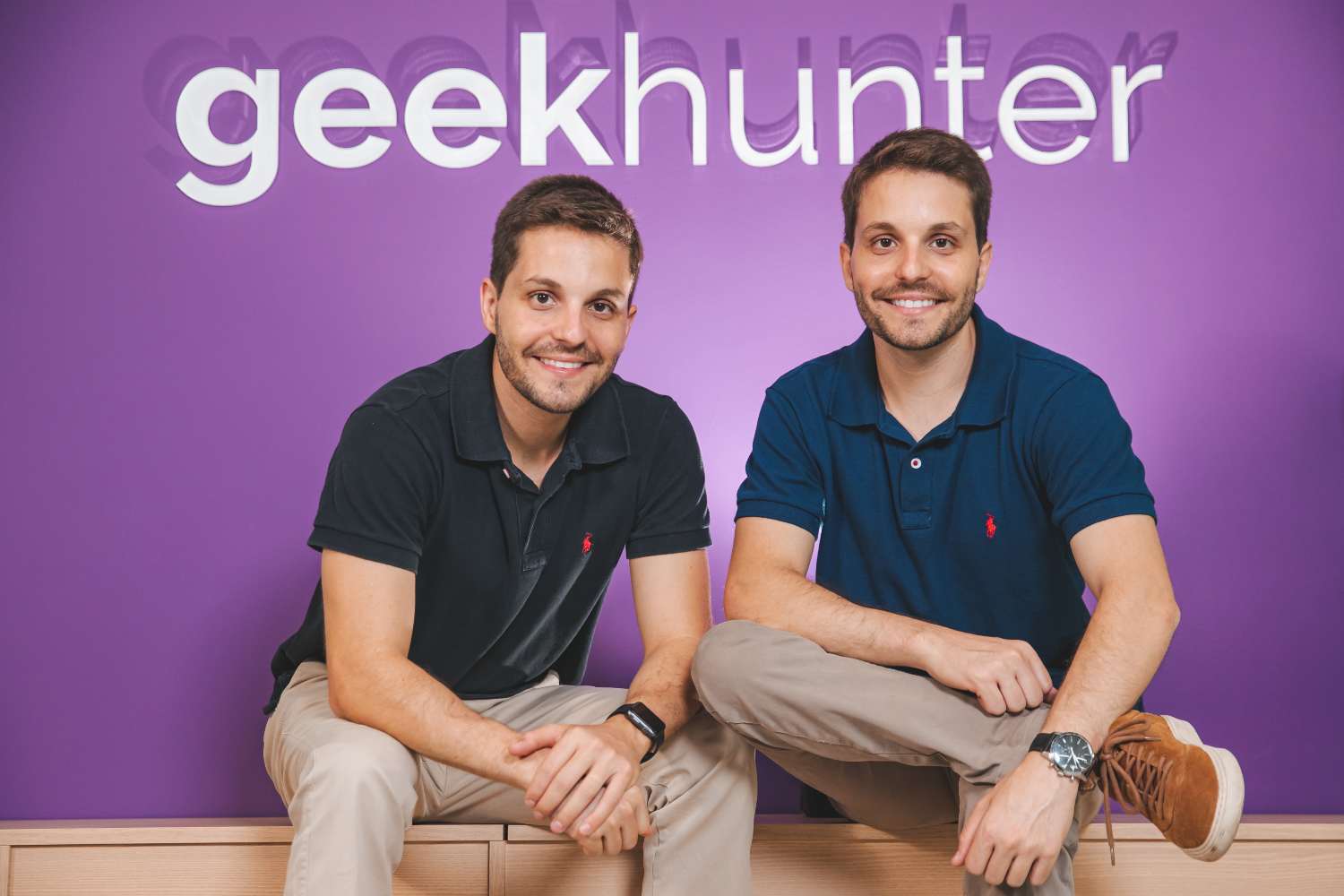Employer Branding is not a super famous word, do you agree? But what if I ask what companies like Google, Netflix, and Nubank have in common what will you tell me?
Revenue? Market value? It may be, but the most valuable asset of these corporations is not their actual revenue, but their reputations as employers.
And you know it. It is Employer Branding in its most essential form.
After all, everything that these companies are today was due to the hard work and passion of the first ones who believed in the cause. The first ones to raise the flag. From the first employees.
Making your company well-liked in the job market is as vital as beating the sales targets. Because there is no point in selling services/products that are not well performed or well produced, right?
Employer Branding is the subject of our article.
What is Employer Branding
Employer branding is nothing more than a strategy focused on human assets, aimed at strengthening the company’s image as a great employer.
This is a long-term strategy. With the actions you will see throughout this article, your company will be able to keep the best employees, grow, and become a highlight among competitors.
More than attracting customers, the focus of employer branding is on the current and future employees of your company. This will make your workplace a source of pride and career growth, making professionals strive to stay on the team and make others want to join!
In this way, your company will build high-performance teams, gain productivity, stand out in the market, and attract more and more attention from everyone. It’s a snowball!
In a nutshell:
Employer Branding is about building a strong culture, which in itself is able to attract and retain the best talent.

Employer Branding in People Management
Employer Branding is an HR strategy, in essence, but it has many similarities and familiarities with Marketing. Yes, forget everything you’ve heard throughout your life about Marketing serving only to generate sales and HR serving only for recruitment, selection, hiring, and firing processes.
Today, more than ever, the Human Resources professional is vital to the corporate body. HR is the strong link between the company and employees.
Just like HR, Marketing is about people and for people. Therefore, this union makes all the sense in the world!
Why invest in Employer Branding
Employer Branding to base growth on human capital. You may ask: “But, directly, how can this bring me more profit?”. Unfortunately, some employers still have a hard time understanding the relationship that human assets have with their profitability.
If in the past companies could prosper without investing in staff, today the scenario is quite different.
Check out the advantages of making an Employer Branding plan for your company:
Competitive advantage in the “fight” for talent
Employer Branding has many similarities with Marketing. Companies with a strong culture, in general, have much better chances of conquering talents that are disputed in the job market, just like what happens in the competition for clients by competitors.
If a professional has to choose between two companies offering the same salary, and one of them is not known as a good place to work, do you have any doubts about which would be the final choice?
That will be your advantage! Even the number of candidates enrolled in selection processes will be higher. Imagine how many resumes Nubank, Stone, or PicPay receive, for example.

Lower severance costs
Employer Branding also decreases your turn-off expenses. Does your company have in the tip of the pencil everything it has ever spent with the termination of employees? Well, you should know that firing a member of your team can cost you almost a year’s work.
This misalignment can be very expensive, right?
When companies realize this, it is impossible to separate the company’s success from a well-structured recruitment and selection process.
High productivity with high quality
In an interview with ISTOÉ, Julia Hartz, CEO of Eventbrite, said: “It is no longer necessary to live for work. Happy, healthy people work better.”
If you agree with that statement, here we have a company very likely to succeed with Employer Branding strategies.
However, today’s strongest brands have already realized the power that a talented and satisfied employee has. So multiply this potential by the number of people working in your company and watch the magic happen. It’s time to get your hands dirty!
Employer Branding generates satisfied staff + satisfied client
Employer Branding has incredible transformative potential, and not using it is losing efficiency.
Every consumer has encountered a bad mood from a service provider. The bad experience doesn’t go away and the whole company is penalized by the bad behavior of some people
Enio Klein, operations manager at SalesWays, states that “negative references are much more powerful than positive ones”. And this is extremely realistic.
Since the human being is an emotional being, nothing is more correct for companies than to act to generate good memories, instead of “pushing” uncommon cases under the carpet. People need to feel special.
Every consumer needs excellent treatment, but this will only happen if a company’s employees are willing to work with excellence.
Therefore, investing in employee happiness is a two-way street.
How to avoid damage to the employer brand’s reputation?
Lower costs in attracting talent
Have you ever stopped to think that a friend’s recommendation for a restaurant carries much more weight than any advertisement, text, or campaign?
Talent also has friends. How about creating a strong culture, where even those who leave take with them good things to say about the company? Surely your expenses with talent acquisition will fall by half.
Employer Branding Strategies
Do you understand the importance of adding Employer Branding into your company’s routine, strategic decisions, and work mantra? Never underestimate a good experience!
So now that you have decided to apply it, I will show you a journey of actions to implement employer branding correctly in your company.
What is your company’s purpose?
Of all the measures, this is the basis. It is not possible to draw up an action plan to implement Employer Branding without first knowing the purpose of a brand’s existence.
This purpose, of course, must be aligned with the vision that the CEO has for the business so that there is no conflict between culture code and reality.
If the company has not started with a clear and approved mission statement, it is worth talking to employees and extracting from them the company’s defining characteristics. After that, it will be necessary to find a standard and validate it with the team.
Do you already have a purpose and do all employees have it very clear in their routines and actions? Then let’s move on to the second point.
Tips for leveraging the employer brand’s reputation
What is the profile of the ideal employee?
Here comes a tough question: what type of collaborator is your company looking for? A more executive profile, or a more strategic profile? How do you find out if the professional has a cultural fit?
Are you looking for a professional who closes with more horizontal management, or a more conservative professional in terms of hierarchy? It is necessary to have all this mapped out so that no mistakes are made at the moment of hiring.
Eventually, to get to know the ideal profile, conduct an interview with the team members. Some interesting questions to ask are
What do you like most about the company? And what do you like least?
If you were the CEO, what would you implement here?
In your opinion, what is the strongest characteristic of this company?
Tell us an outstanding story that you have lived through here
What is the first image that comes to your mind when you imagine our team?
And voilà. We have a great story being documented!
How the team feels today
Wishing for a high-performance team without having a “satisfaction thermometer” is almost like swimming in the beach sand. It is not possible.
Invest in bi-weekly meetings, the so-called 1:1s. The meetings should be held between manager and employee only, to discuss internal processes, discuss expectations, gather feedback, and outline an action plan for improvement.
In other words, the employee will have a special and personalized follow-up, with a logical line of evolution and goals.
You can also invest in internal satisfaction surveys, in the NPS format, where it is possible to obtain scores and feedback without the need for direct contact. Try it out!
Now for a very important point in your Employer Branding strategy:
Creating an EVP (Employment Value Proposition).
After doing all the work of immersion in your team, it’s time to define which benefits and working conditions most speak to current employees and, of course, to the talent the company still wants to attract.
What is an EVP
The Employee Value Proposition is a set of measures that your company offers to the workforce. It is everything they will receive in return for their effort and hours dedicated to the company.
It is not only about tangible benefits such as salary and benefits, but also the work purpose, values, and the environment provided.
The main points of an EVP are:
- Compensation and benefits, such as vacation, health, and dental plans, flexible working hours;
- Promotion and career development policies, feedback practices, and evaluations;
- Programs aimed at the employee’s experience inside and outside the company, such as physical, emotional, and social well-being;
- An overview of the company’s culture, defining values, goals, and the message the company wants to leave in the world.
How to create an EVP
Starting from the idea that research has already been conducted to base the Employer Branding strategies, the EVP creation stage is important to make the company’s culture and goals tangible.
Counting on the participation of the HR sector, the leaders, the executives, and the employees themselves, it’s time to answer questions such as:
- What arguments does my company have to convince a potential candidate to apply for a vacancy?
- What motivates current employees to get up and go to work every day?
Planning the rewards mentioned in the previous topic is the next step. Make use of the success stories! Understand what works in other companies to adapt it to yours.
With most of the plan in place, implement it! There is nothing more frustrating than investing time and effort in a project and it remains only on paper. Promote changes in climate and culture, and make improvements in the company’s way of being!
The salaries and benefits package can be increased with financial resources, but the emotional rewards and experiences require building a good place to work.
Finally, communicate. Communicate to employees, the public, and all stakeholders that your company cares about its employees.
Remember:
Without this step, Employer Branding is nothing more than an idea. Create deadlines for each step and get to work!
Employer Branding in practice
Use technology to your advantage
Using tools to support Employer Branding work is extremely important. You can have all kinds of knowledge and technique, if you don’t have tools that automate and facilitate your work, you won’t be able to do it fully.
In addition, these are companies and people focused 100% on solving a specific type of pain for the HR industry. When you understand your situation, you can decide on the tool(s) that best fit your profile!
Some tools that can greatly support HR’s work:
- Runrun.it (for demand generation and deadline control);
- Wrike (similar to Runrun.it, but with some additional features);
- Feedz (for team engagement, satisfaction surveys, and gamification);
- Sólides (for People Analytics and Behavioral Profiling in Recruitment and Selection);
- Hondana (for team training management);
- GeekHunter (for hiring IT talent).
Employer Branding for a great first impression
Most HR professionals have once asked themselves, “how to make them like it here?” How can I make talented candidates appreciate the company? How to make a good first impression?
Well, it’s not easy, but it’s not hard either. The main ingredient is pretty basic: treat with sincerity and kindness.
In the article “How to set up a job interview?”, we give tips on how to engage the candidate from the first meeting and make him/her do good word-of-mouth marketing in favor of the company.
Ps:. Without spending $0.01!
Abuse social media
Having regular posts about the team’s routine is also a great Employer Branding action. For this, Instagram is perfect, more than other social networks. This is because Instagram is the social network for Life Style.
Unusual, natural, spontaneous posts, with well-taken photos, usually increase the followers and, consequently, the visibility of the employer brand.
Photograph training sessions, internal and external events, visits, happy hours, and even banal moments, such as smiles among employees. But remember: don’t do anything forced.
Spontaneity is the key to business.
Take recommendations from the team
Using real reports from the team is another card up your sleeve. For this, use a careers page and align with Marketing to create some campaigns around that as well. And oh, keep an eye on Glassdoor!
You may know that Glassdoor is a company rating platform. But do you know that there is one of the top research sites for candidates?
On Glassdoor, the candidate has access to information such as average salary, the satisfaction of other people, company culture, and quality of life, and can even see written evaluations (if any).
If you have any negative and unfounded evaluations, consider asking for ratings for the team. This way, the overall average increases on the platform, and the negative rating ends up being minimized.
Employee onboarding
Imagine a new person entering the company. It is natural to have an adjustment curve, right? Yes, right.
But what if HR lent a hand with this? Onboarding is a way to centralize this introduction and say “everything that needs to be said” in the first moment.
This is also when the employee will have the first contact with the company’s culture. This is where he can and should be “molded” to absorb and replicate the company’s culture!
In this sense, when there is no onboarding, the new employee may get a little lost in relation to roles, and may not know who to ask his questions and this generates dissatisfaction.
Onboarding is very important: set up a content cluster, containing videos, articles and other documents that can facilitate their entry. Have each department introduce themselves and their work. Make interactive presentations, a welcome coffee, and whatever else your creativity demands!
Relationship with the talent pool
Relationship with the talent pool is one of the most successful Employer Branding strategies.
Just because a person didn’t follow a selection process with your company doesn’t mean he/she has to be discarded. There are several reasons for this, aren’t there?
Don’t use the talent bank as a lifeless deposit of “discarded” resumes. Plan actions that oxygenate these future candidates and show that, for a new vacancy, the resumes in the talent bank are evaluated before going public!
It is important to keep in touch, to show that your brand has a purpose. And then, regardless of the selection process results, you will have great employer brand advocates.
Conclusion
In a world where innovation cycles are getting shorter and shorter, there is no longer room for companies willing to follow the “old way of doing things.” Companies that learn to humanize become talent targets, rather than prospecting targets.
Understanding and applying Employer Branding concepts is one of the existing strategies to differentiate your company, but when it comes to employees and advocates of your brand, it is the main one.
The success cases in the market don’t lie. As difficult and distant as it may seem, applying strategies of this level is capable of bringing excellent results, which emerge without even realizing it.
Do you remember that old practice of opening an opening, receiving dozens of resumes, and, without an ounce of empathy, only returning the selected ones? Well, it is not that old, many large companies still do it.
This is a great example of a bad action for your Employer Branding.
The need to work on a good employer brand reputation is urgent for those who want to stand out.
So, does your company already have a strategy to attract and retain talent?
















